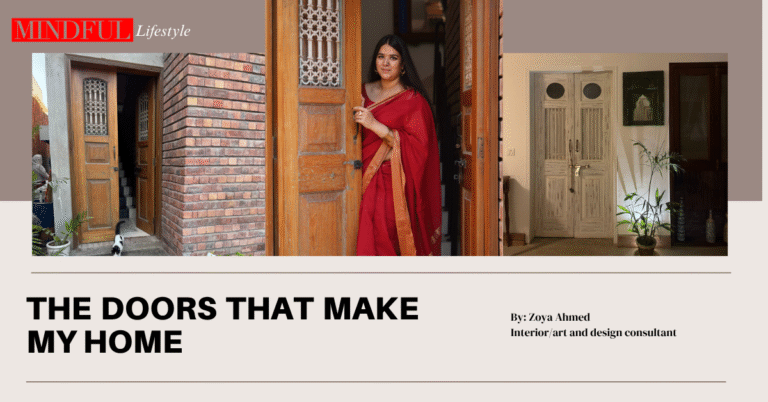Some homes speak through their walls, others through their windows. Mine speaks through its doors.
Old doors have always held a quiet magic for me — their knobs worn by time, their wood grain whispering tales of hands that once turned them. When I was building my home — a sanctuary rooted in sustainability, nature, and emotion — I knew I didn’t want just new walls with fresh paint. I wanted memories. I wanted soul. And so, I began collecting old doors.
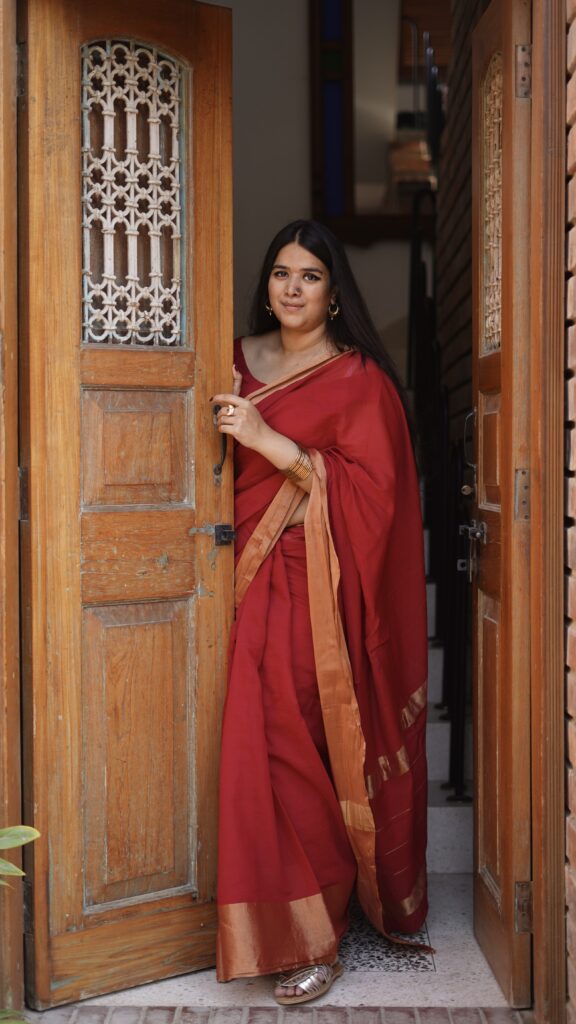
Each antique door in my home was chosen not just for its beauty, but for the way it felt — the story it carried, the way it opened me to something more. One of them, a tall teakwood double door, anchors my living space. Salvaged from a crumbling haveli in interior Sindh, its brass knobs are slightly dented — worn by generations of impatient knocking. Carved floral borders bloom like a memory of monsoon. I often imagine the lives that passed through it: brides in red, children darting past with ink-stained fingers, the quiet shuffle of someone returning home after years away. Then there’s the green-patina door at the end of the hallway, its peeling paint revealing layers of blue and ochre beneath — like a map of time. I left her unrestored, deliberately. She’s imperfect, yes — but that’s what makes her beautiful. A daily reminder that our scars are part of our story — and that she, in all her weathered grace, is exquisite.
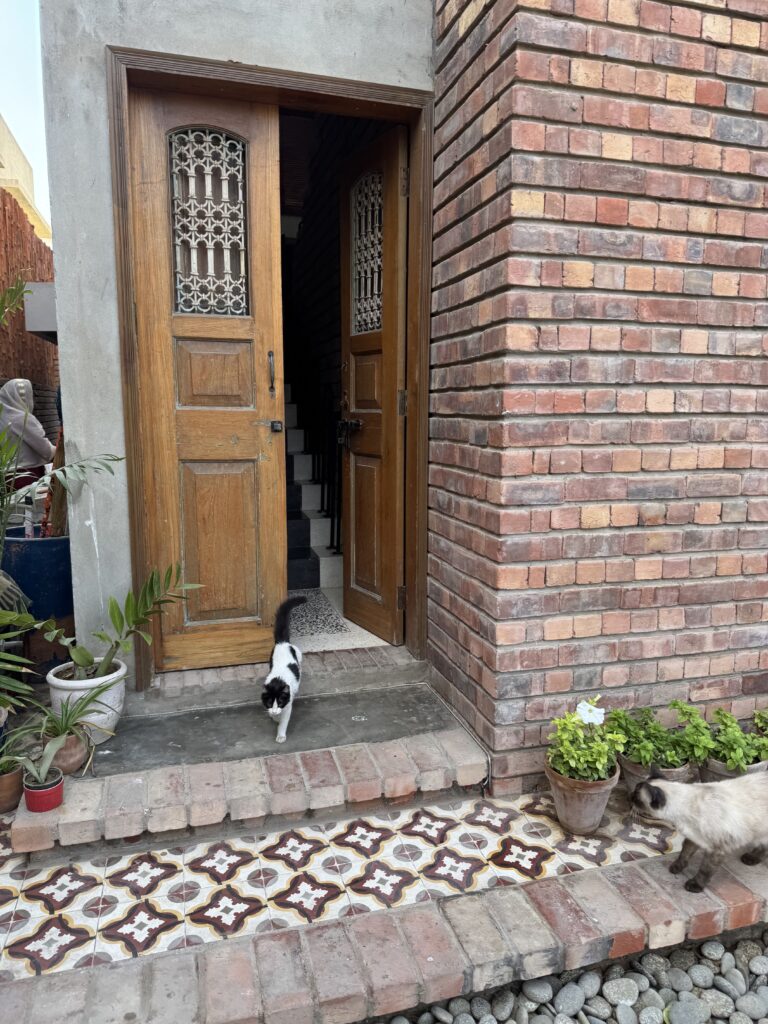
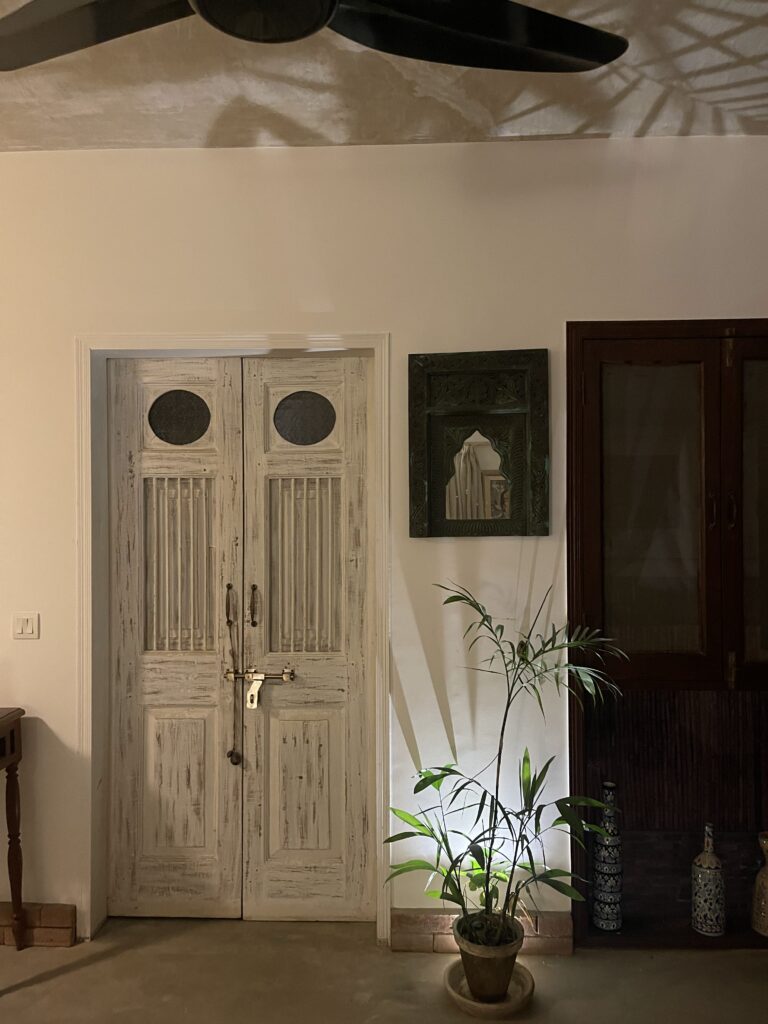
Using old doors is also a conscious act of sustainability. By repurposing rather than producing, I’m choosing a lower carbon footprint — sparing these beautiful, seasoned woods from ending up as waste, and avoiding the environmental toll of creating something new. It’s a small, quiet resistance to the throwaway culture that surrounds us. And in doing so, my home becomes not just a place to live, but a living practice of values I hold dear.
The bathroom doors, often overlooked in modern homes, are among my favorites. One of them has a hand-carved lattice window that lets in slivers of light, turning the floor into a shifting mosaic throughout the day. Another, from a colonial-era bungalow, still has its original porcelain latch. I’ve had guests pause just to touch it — as if it connects them to something older than all of us.
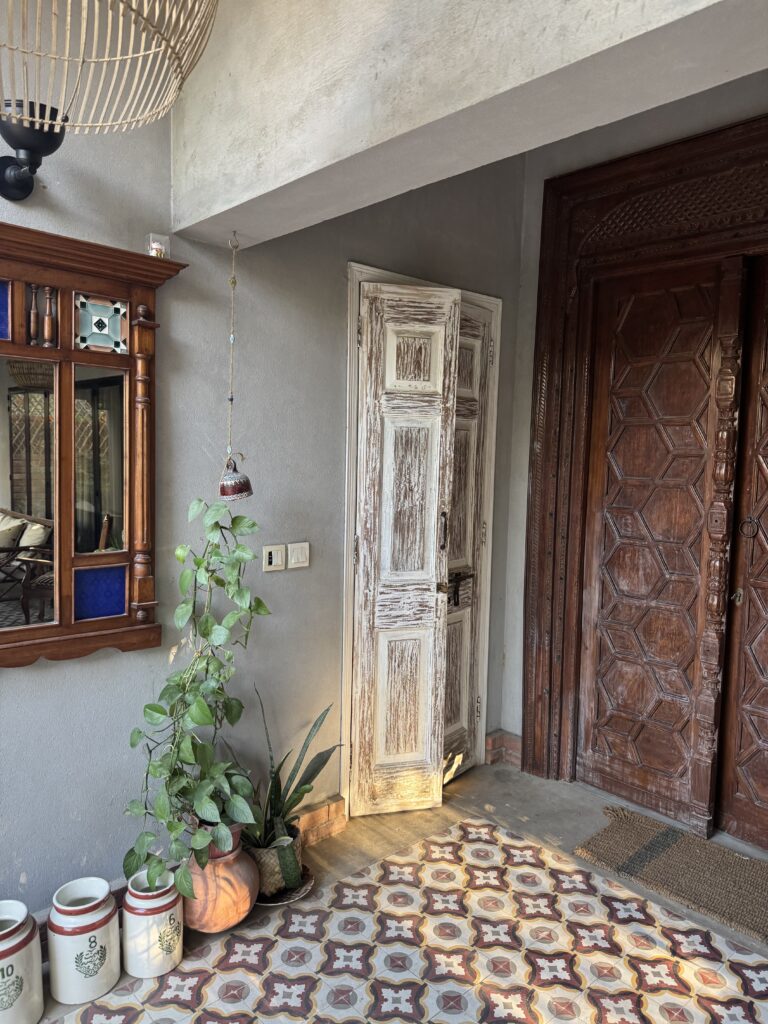
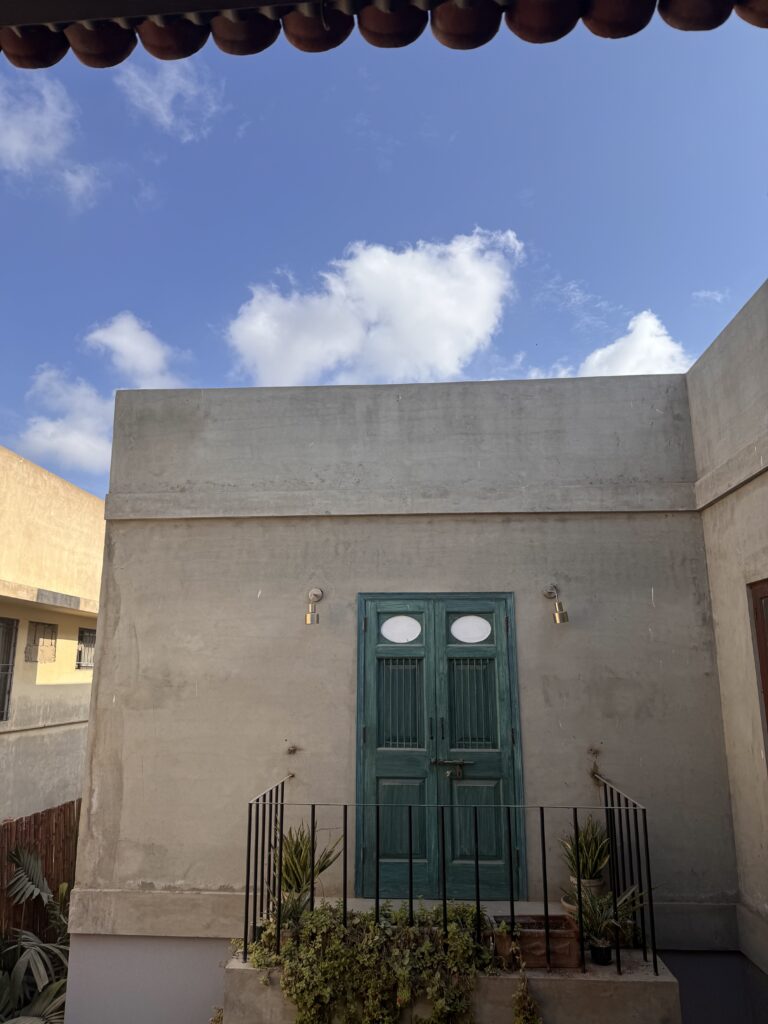
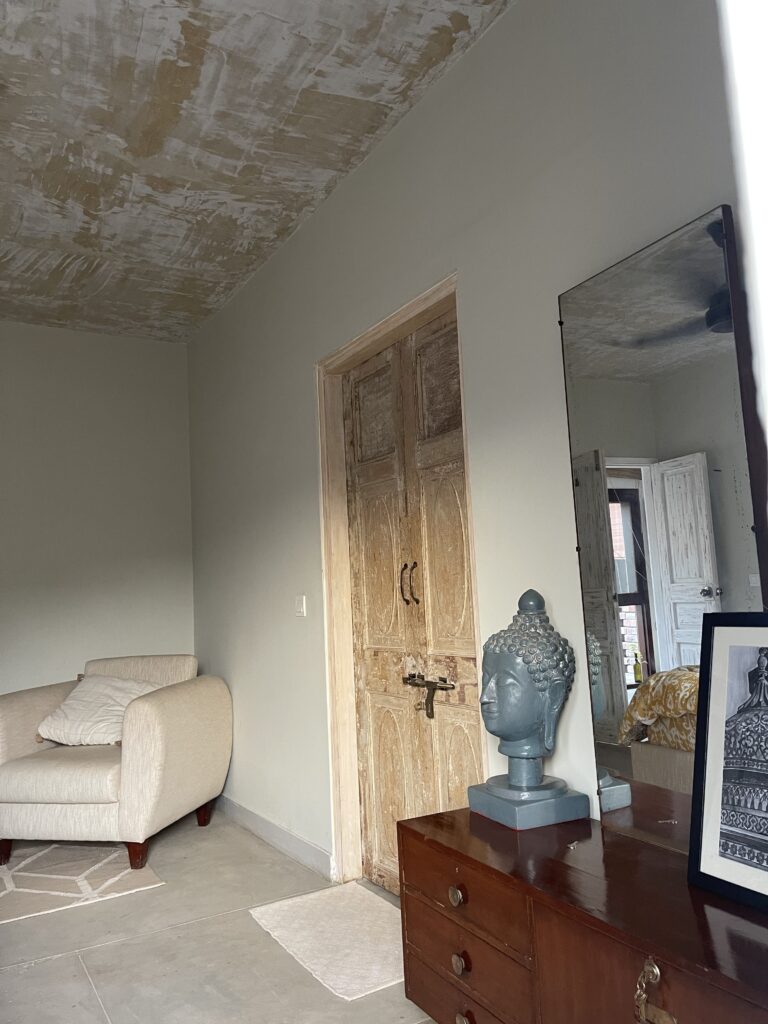
These doors do more than separate rooms — they frame transitions, both physical and emotional. Opening them feels like stepping between eras. They make my home feel unbound by linear time — part sanctuary, part time capsule.
People often ask why I didn’t just use new wood or custom pieces. The answer is simple: these doors carry more than form — they carry memory. They’ve weathered monsoons and migrations, weddings and wars. And now, they shelter me — in all my versions.
There’s something deeply spiritual about walking through a door that has known so many stories before your own. You begin to realize: you are not the first, and you won’t be the last. But for now, these doors are yours — and that, too, is a story worth holding.
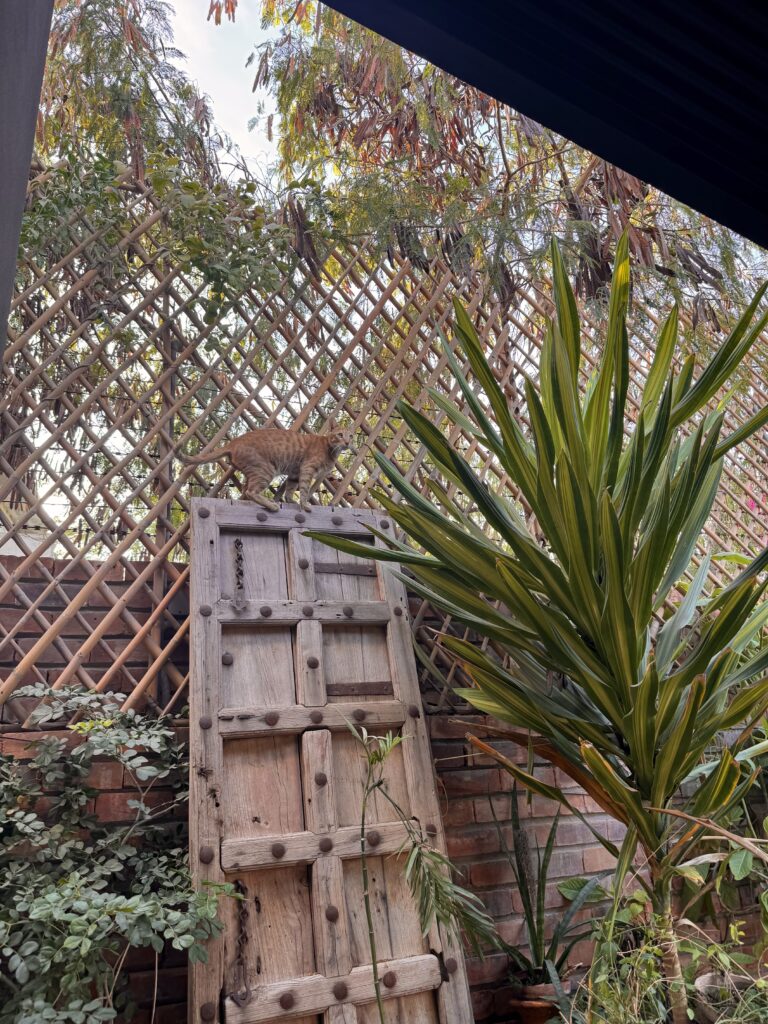
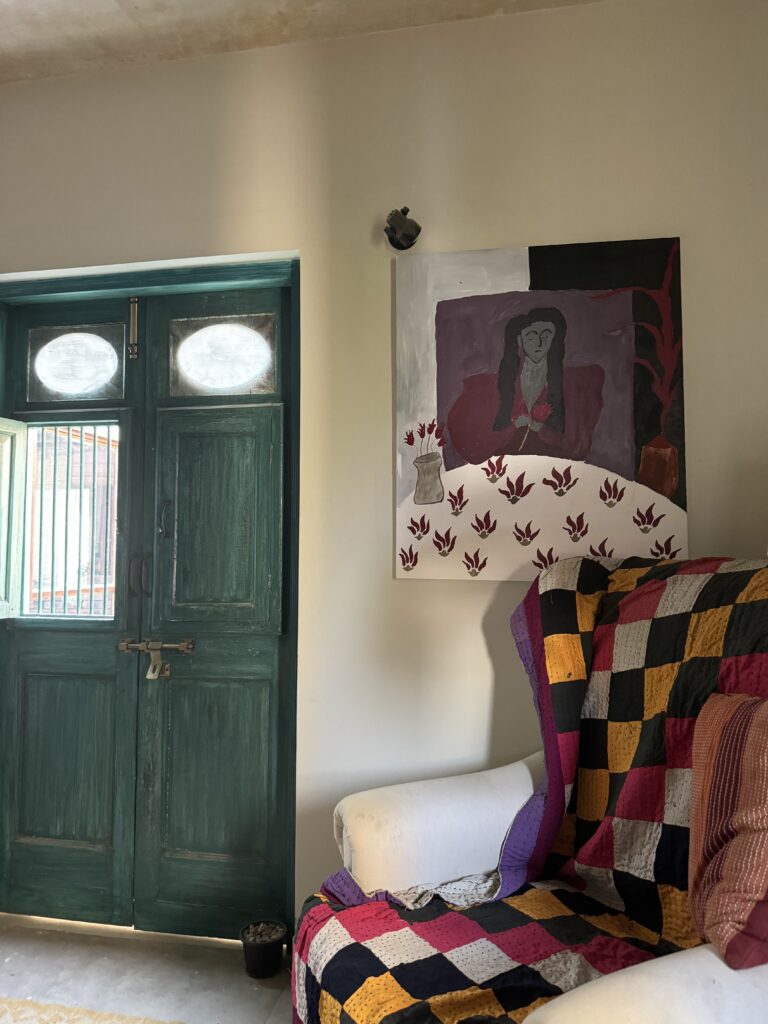
By: Zoya Ahmed
Interior/art and design consultant
@zoyaahmed



